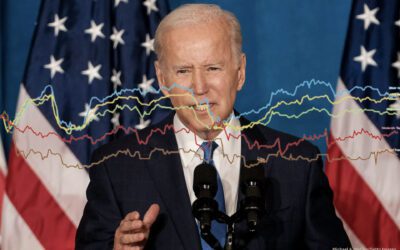A new national survey conducted for Democracy Corps and the Women’s Voices Women’s Vote Action Fund[1] shows an intense new majority for implementing and improving the Affordable Care Act. A minority of voters want to repeal or replace “Obamacare,” which has been the core demand of the Republicans in Congress who have shut down the government.
We want to be clear because so much of the punditry assumes Obamacare is “unpopular.” Many supporters assume that support will come once the benefits take effect in January. Neither of these assumptions is true. Support has shifted dramatically since 2010 when reforms were unpopular and supporters paid a high political price. Some of that reflects perceptions of new positive benefits by people over 50 years, white older women and unmarried women. While supporters and opponents are divided evenly on the health care reforms, 8 percent are opposed because they do not go far enough. Just 38 percent are opposed because it is big government – very close to the number who stick with the Republican call to repeal and replace the law.
The debate ahead is about implementation of the Affordable Care Act, or Obamacare. When that is the choice, voters trust the Democrats by 17 points (49 to 32 percent) to do a better job. The more Republicans make the period ahead about blocking implementation, the more they trust Democrats to do a better job in government.
SEE THE QUESTIONNAIRE AND RESULTS.

Key findings:
· Just 38 percent now clearly oppose the Affordable Care Act. While likely voters divide evenly on the plan, 8 percent oppose the law because it does not go far enough. As a result, just 38 percent oppose the law because it is big government.
· By significant margins, voters want lawmakers to implement and fix the law, rather than repeal it. By a 20-point margin, 58 percent to 38 percent, voters say lawmakers should implement and fix the law rather than repeal it. Additionally, intensity favors implementation—38 percent strongly favor implementing the law while 28 percent strongly favor repeal.
· Strong opposition to the law has dropped a net 10 points since 2010 —now at 34 percent. This is a totally different context than 2010, when Democrats paid the price for the ACA and Republicans took control of the House
· These shifts are driven by movement among key groups who are the first to see the benefits. The biggest shifts on favorability since 2010 come not from partisans but from independents and key groups, including unmarried women, white non-college voters, and seniors. These are also the groups most likely to report that they are seeing the benefits of the law. This is not being driven by partisans aligning their views; this is being driven by the relevance of the changes to people’s lives.
· Unmarried women, independents, white non-college voters, and seniors are beginning to see the effects of the Affordable Care Act. While many still report “too early to tell,” the percent of unmarried women, independents, babyboomers, white-non college voters, and seniors who say that they are beginning to see the effects of the Affordable Care Act has doubled since March.
· By a 17-point margin (49 to 32), voters say they trust Democrats more than Republicans on implementing the Affordable Care Act. The more Republicans make the period ahead about implementation, the more voters trust Democrats to do a better job in government.
· Positive information and messaging moves support for the ACA even further. Focusing on the law’s protections for insurance consumers and the improved insurance benefits for consumers moves voters to a more positive position on the ACA. Messaging and policies on both sides produce a net 11- point shift in the number saying they expect positive benefits with health care reform. The gain is even greater among those who are most likely to be impacted—20 points among young people and unmarried women.
· There is still a real lack of information among voters, especially those who are most likely to benefit from the law. Almost half of all voters (46 percent) still say it is too early to tell how the ACA will affect them—unchanged since March. The lack of information is particularly pronounced among the RAE. This includes unmarried women, even as many are beginning to see benefits. This aligns closely with what we heard in focus groups.
· Voters see this as a “first draft” and understand that it will take time to get it right. In focus groups with unmarried women, voters said this law is a “first draft.” They see it as a big change and believe it will take some time to work well for everyone—but they want it to be implemented so we can begin to reap its benefits and make those important changes.
· Among all voters, as well as unmarried women and the RAE, the biggest concerns are about jobs and premiums going up. All of these came through very clearly in focus groups among unmarried women who were deeply concerned that the ACA would have a negative effect on the number and quality of jobs available, as well as the potential cost of insurance plans.
· However, voters do not see the Affordable Care Act as the main enemy—insurance companies are. The most positive message for the Affordable Care Act focuses on protecting consumers from insurance companies– and produces big shifts at the end of the survey.
· A working women’s agenda, including health care reform, is empowering for unmarried women. Unmarried women see healthcare as one essential part of broader economic goals for women. Because many unmarried women have to make healthcare choices based on basic household finances, a message connecting healthcare to pocketbook policies for working women is very powerful for this group and aligns closely with how they think about healthcare.
[1] Based on a national survey conducted by Greenberg Quinlan Rosner for Democracy Corps and Women’s Voices Women Vote Action Fund. The survey of 950 2012 voters (1150 unweighted) nationwide, including 860 likely 2014 voters, was conducted from October 6-8, 2013. Unless otherwise noted, overall margin of error= +/-3.18 percentage points at 95% confidence.




